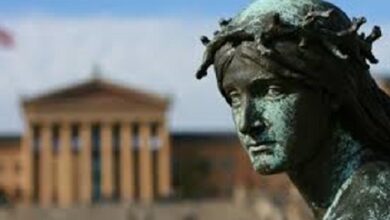Avant Garde movement Characteristics Historical context stages
Avant-garde
Avant-garde, or artistic avant-garde, is called the set of cultural, literary and artistic movements that emerged during the last years of the 19th century and the first of the 20th century in Europe . In this article we will provide you the information about the movement of the avant-garde
The term “vanguard” comes from the military sphere: it is used to designate those troops who are in front of the main body and who, in general, are the first to come into contact with the enemy. Thus, by extension it has been applied to groups, sometimes political, that were the first to propose revolutionary changes in the societies of their time.
Enhance your reading: Causes of the conquest of America in detail
Characteristics of avant grade movement
The main characteristics of avant-garde are the following:
- It was made up of very diverse movements and from different disciplines (cinema, music, literature, painting) that had in common the criticism of the society of their time. This critique included all aspects of reality: politics, customs, production, artistic consumption, etc.
- Especially the historical avant-gardes, questioned the totality of the art of their time . They rejected art institutions such as museums and academies and salons that were the traditional legitimizing instances of art, considering that they were manifestations of a society that they considered corrupt.
- They rejected the modern artistic tradition . In this sense, they proposed a break in the historical line of faithful representation of reality and the search for ideal beauty that had begun in the 15th century with the Renaissance .
- In the art of ancient civilizations and non-industrialized peoples they traced forms, practices and procedures that they considered more genuine than those developed by modern European culture.
- They proposed to unite artistic practice with everyday life , transforming daily activities into artistic gestures and also using artisanal methods for artistic production.
- They tried to liberate the creative subjectivity , both of the artist and the recipient of the work.
- They published manifestos and writings in which they made their considerations and lines of action known. In general, these consisted of revolutionary proposals both in politics and in different arts.
Historical context of the avant grade movement
The new artistic searches were the consequence of a dynamic historical context. Among the factors that influenced the new way of understanding artistic processes can be mentioned:
- The acceleration of changes that occurred during the 19th and early 20th centuries:
- Industrialization.
- Changes in political structures.
- Consolidation and rise of new social classes.
- Urbanization.
- Increased interaction between people thanks to mobility and the development of communications.
- Extension of literacy.
- Changes in international relations with the new waves of colonialism and the international division of labor.
- The emergence of new views to explain social and individual phenomena, such as socialism and anarchism in politics, the psychoanalysis of Sigmund Freud, among others.
- Since the mid-nineteenth century, the growing phenomenon of artists’ reflection on their expressive media (music, literature, plastic arts) favored their disengagement from artistic institutions . This freed them from dependence on a patron to carry out their works.
- In painting, the Impressionist movement and, above all, Post-Impressionism were of great influence .
Enhance your reading: Suprematism art movement with characteristics/main artists
Stages of avant-garde
Although some authors propose as authentic vanguards only the former; others, in a broader sense, consider that the avant-garde had 3 moments.
First stage
From 1900 to 1914 the so-called “historical avant-gardes” arose .
Historically, this was a period of apparent social calm in which economic prosperity and optimism in the progress of the bourgeoisie concealed underlying tensions of traditionally relegated groups, such as women or workers who struggled to improve their living conditions.
The movements that emerged in this period took a critical look at society and argued that art could not remain oblivious to these tensions.
Some authors consider German Expressionism authentic avant-gardes ( Die Brücke , 1905 and Der Blaue Reiter , 1911); the Fauvism (France, 1905); the Cubist , 1907; Futurism (Italy, 1909) and the Russian avant-gardes ( Suprematism , Constructivism, Russian Futurism).
Second stage
It is about the interwar period (1919-1939).
During this moment of recovery in Europe, after the First World War , 2 opposing lines developed: first, the constructivist , which sought to retake the rationality and order of certain periods prior to the war. Within this line, movements such as Suprematism or Neoplasticism can be included, which tried to limit themselves to the minimum elements of painting such as the line, the point and the basic colors (primary, black and white).
Also located here are those schools that sought to relate artistic activity with the concrete life of people, such as the Bauhaus and architectural functionalism.
On the other hand, an opposite line proposed irrationality as a rejection of a reality that it considered hypocritical and destructive. Some examples of this line are Dadaism , Surrealism and metaphysical painting.
Third stage
Starting in 1950, the axis of artistic and cultural activity shifted to the United States of America. There, different avant-garde trends emerged such as abstract expressionism, pop art , minimalism and conceptual art.
There were also avant-garde movements in Latin America, especially in Argentina with concrete art and perceptism, and in Brazil with the movements of the 1960s.
Representatives of the avant grade movement
Some representatives of the different avant-garde movements were the following:
- Expressionism: Ernst Ludwig Kirchner (painter), Bertolt Brecht (writer), Friedrich Wilhelm Murnau (film director).
- Fauvism: Henri Matisse (painter).
- Cubism: Pablo Picasso (painter), George Braque (painter).
- Dadaism: Marcel Duchamp (plastic artist), Tristán Tzara (artist).
- Futurism: Umberto Boccioni (artist), Filippo Tommaso Marinetti (writer).
- Suprematism: Kazimir Malevich.
- Surrealism: André Breton (writer), Salvador Dalí (artist).
